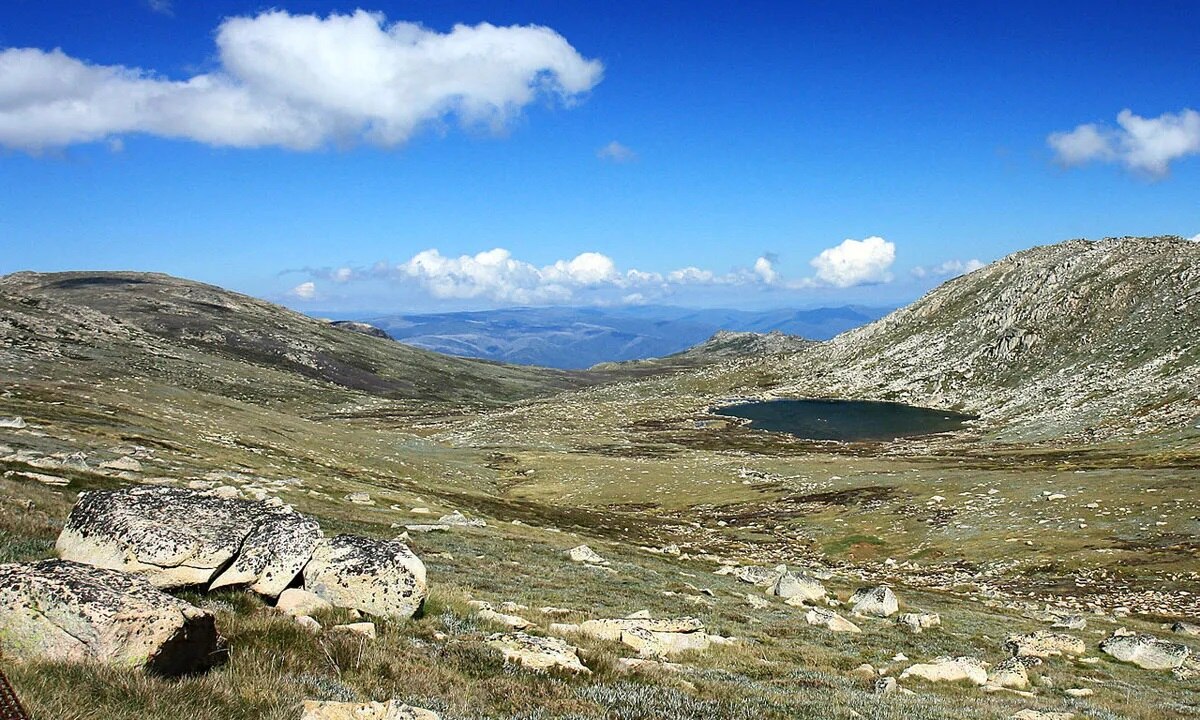
Mount Kosciuszko, situated in the breathtaking Australian Alps, holds a special place in the hearts of adventurers and nature enthusiasts. As the highest peak on the Australian continent, this majestic mountain beckons travelers with its awe-inspiring beauty and rich geological history. From its humble beginnings as part of an ancient seabed to its transformation into a towering summit, Mount Kosciuszko has witnessed the passage of time and stands as a testament to the Earth's remarkable geological processes.
In this article, we will embark on an exhilarating journey to uncover 10 fascinating facts about Mount Kosciuszko. From its unique flora and fauna to its significance in Indigenous Australian culture, each fact will unveil a new layer of wonder and appreciation for this natural wonder. So, fasten your virtual hiking boots and get ready to explore the wonders of Mount Kosciuszko as we delve into its intriguing facts and unravel the mysteries that make it a truly remarkable geological and ecological marvel.
Key Takeaways:
- Mount Kosciuszko, the highest mountain in Australia, is a hiker’s paradise with unique flora and fauna, offering breathtaking views of the Australian Alps and a rich cultural heritage.
- The mountain’s geological significance, UNESCO Biosphere Reserve status, and year-round appeal make it a symbol of natural beauty and resilience, captivating the hearts of adventurers and nature enthusiasts alike.
Mount Kosciuszko is the Highest Mountain in Australia
Located in the Snowy Mountains of New South Wales, Mount Kosciuszko stands proudly as the highest peak on the Australian continent, reaching an impressive elevation of 2,228 meters (7,310 feet) above sea level. This majestic mountain is a part of the Great Dividing Range and is renowned for its breathtaking vistas and unique alpine environment.
It Was Named After a Polish-Lithuanian Military Leader
Mount Kosciuszko was named by the Polish explorer Pawe? Edmund Strzelecki in honor of Tadeusz Ko?ciuszko, a distinguished Polish-Lithuanian military leader and national hero who fought for the independence of Poland and the United States.
The Mountain Holds Cultural Significance for the Aboriginal People
For thousands of years, the traditional Aboriginal custodians of the land, the Ngarigo people, have revered Mount Kosciuszko as a sacred site. The mountain holds significant cultural and spiritual importance in their heritage, and they refer to it as "Tar-gan-gil" in their language.
It Attracts Hikers from Around the World
Mount Kosciuszko is a hiker's paradise, drawing outdoor enthusiasts from all corners of the globe. The popular Main Range Track provides a scenic route to the summit, offering hikers an opportunity to traverse alpine meadows, glacial lakes, and rugged terrain while taking in the stunning natural beauty of the surrounding landscape.
The Mountain's Flora and Fauna are Unique and Diverse
The alpine region surrounding Mount Kosciuszko is home to a rich tapestry of unique flora and fauna, including the iconic snow gum trees, alpine wildflowers, and a variety of native wildlife such as wallabies, echidnas, and colorful parrots. This diverse ecosystem provides a captivating experience for nature enthusiasts and researchers alike.
It is a Year-Round Destination
While Mount Kosciuszko is a popular destination for hikers and outdoor adventurers during the summer months, it transforms into a winter wonderland when snow blankets the landscape. The snowy season lures skiers and snowboarders to the nearby slopes, offering a different kind of thrill for visitors.
The Mountain's Geology Tells a Story of Ancient Landscapes
The geological formations around Mount Kosciuszko offer a glimpse into the ancient history of the Australian continent. The exposed rocks and glacial landforms provide valuable insights into the continent's geological evolution over millions of years, making it a site of great interest for geologists and earth scientists.
Mount Kosciuszko is a UNESCO Biosphere Reserve
The surrounding Kosciuszko National Park, where the mountain is located, has been designated as a UNESCO Biosphere Reserve, recognizing its ecological significance and the need for conservation efforts to protect its natural diversity and environmental integrity.
It is a Symbol of Natural Beauty and Resilience
Mount Kosciuszko stands as a symbol of natural beauty and resilience, captivating the hearts and minds of all who venture to its summit. Its towering presence and the surrounding alpine wilderness serve as a testament to the enduring power and majesty of the natural world.
The Mountain Offers a Panoramic View of the Australian Alps
At the summit of Mount Kosciuszko, visitors are treated to a breathtaking panoramic view of the Australian Alps, with sweeping vistas that extend across the rugged mountain ranges and picturesque valleys, creating a truly awe-inspiring spectacle.
Nestled in the heart of the Snowy Mountains, Mount Kosciuszko holds a special place in the natural tapestry of Australia. As the highest peak on the continent, it beckons adventurers and nature enthusiasts to explore its alpine wonders and experience the rich cultural and ecological heritage that defines this iconic mountain. Whether adorned in vibrant wildflowers during the summer or cloaked in a glistening blanket of snow in the winter, Mount Kosciuszko continues to inspire all who seek its lofty heights, offering a timeless connection to the captivating beauty of the Australian landscape.
Conclusion
In conclusion, Mount Kosciuszko is a remarkable natural treasure that offers a wealth of geological, ecological, and recreational wonders. Its unique position as the highest peak in Australia makes it a must-visit for nature enthusiasts and adventurers alike. From its rich biodiversity to its intriguing geological history, Mount Kosciuszko continues to captivate visitors with its beauty and significance. Whether you're a hiker, a scientist, or simply someone who appreciates the splendor of the natural world, this iconic mountain has something special to offer. So, pack your bags, lace up your hiking boots, and get ready to experience the awe-inspiring beauty of Mount Kosciuszko firsthand.
FAQs
What is the significance of Mount Kosciuszko?Mount Kosciuszko holds great significance as the highest peak in Australia, attracting hikers, nature enthusiasts, and scientists due to its unique geological and ecological features. Its biodiversity and geological history make it a valuable site for research and exploration.
What are the best ways to explore Mount Kosciuszko?Exploring Mount Kosciuszko can be done through various hiking trails, offering different levels of difficulty and scenic views. The most popular route is the Main Range Track, providing an immersive experience of the mountain's natural beauty.
Was this page helpful?
Our commitment to delivering trustworthy and engaging content is at the heart of what we do. Each fact on our site is contributed by real users like you, bringing a wealth of diverse insights and information. To ensure the highest standards of accuracy and reliability, our dedicated editors meticulously review each submission. This process guarantees that the facts we share are not only fascinating but also credible. Trust in our commitment to quality and authenticity as you explore and learn with us.


